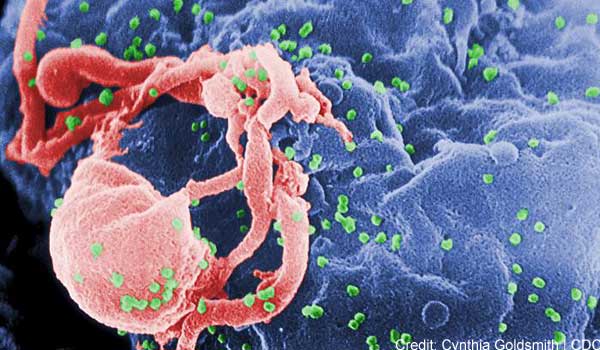New Genetic Marker May Protect Some People Against HIV

A genetic marker that may protect some people against HIV infection has been found, a new study from researchers in France suggests.
This genetic marker occurs less frequently in people infected with HIV than in people who do not have the virus, the study showed.
If confirmed, it would be the second genetic marker ever found to give people some resistance to the infection that causes AIDS. The only such marker known to date is a particular mutation in a gene called CCR5. This gene, which is found in about 1 percent to 2 percent of people of European decent, provides near-complete protection against HIV infection, the researchers say.
The findings are preliminary, because the researchers did not have information about whether HIV-negative people in the study had been exposed to HIV, and it's likely some had never been exposed. Additional studies are needed to confirm the link between this marker and HIV protection, the researchers said.
"If this new association holds up over time, like CCR5 has, it could be quite exciting, but for now more replication is required before comparisons [to CCR5] can be made," said Slavé Petrovski, a postdoctoral research fellow at the University of Melbourne in Australia, who was not involved in the new study but has looked for genes associated with HIV protection.
The researchers concluded that their study provides "strong evidence of association for a common variant with HIV-1 acquisition in populations of European ancestry." HIV-1 is the strain that most commonly causes infections.
The researchers first analyzed the genomes of 1,837 people of European descent, 764 of whom were HIV-positive. They identified a noteworthy genetic marker on chromosome 8 associated with HIV acquisition. They next confirmed this association in a second group, made up of 975 Americans.
Sign up for the Live Science daily newsletter now
Get the world’s most fascinating discoveries delivered straight to your inbox.
The genetic marker was consistently found to be less common among HIV-infected individuals than among others. For instance, among Dutch individuals in the study, 24.3 percent of HIV- infected individuals had the marker, compared with 37 percent of non-HIV-infected individuals. Among U.S. study participants, 24.7 percent of those with HIV had the marker, compared with 31.8 percent of the others.
The genetic marker occurred at similar frequencies in HIV-infected individuals, regardless of how they became infected.
The researchers aren't sure how this new genetic variation could lead to HIV protection, but they say it is located close to a gene involved in regulating antibody levels. The variant may increase levels of antibodies in the mucosal linings — the tissues that line parts of the body exposed to the external environment, such as the mouth, nostrils and genitals.
However, it's possible the genetic variant found in this study is just a marker for another genetic variation that has yet to be identified, said study researcher Jean-Francois Zagury, of the National Conservatory of Arts and Crafts, an education and research establishment in Paris.
The study will be published in the April issue of the Journal of Infectious Diseases.
Pass it on: A new genetic marker may confer some protection against HIV infection, although more research is needed to confirm this.
Follow MyHealthNewsDaily on Twitter @MyHealth_MHND. Find us on Facebook.

Rachael is a Live Science contributor, and was a former channel editor and senior writer for Live Science between 2010 and 2022. She has a master's degree in journalism from New York University's Science, Health and Environmental Reporting Program. She also holds a B.S. in molecular biology and an M.S. in biology from the University of California, San Diego. Her work has appeared in Scienceline, The Washington Post and Scientific American.









